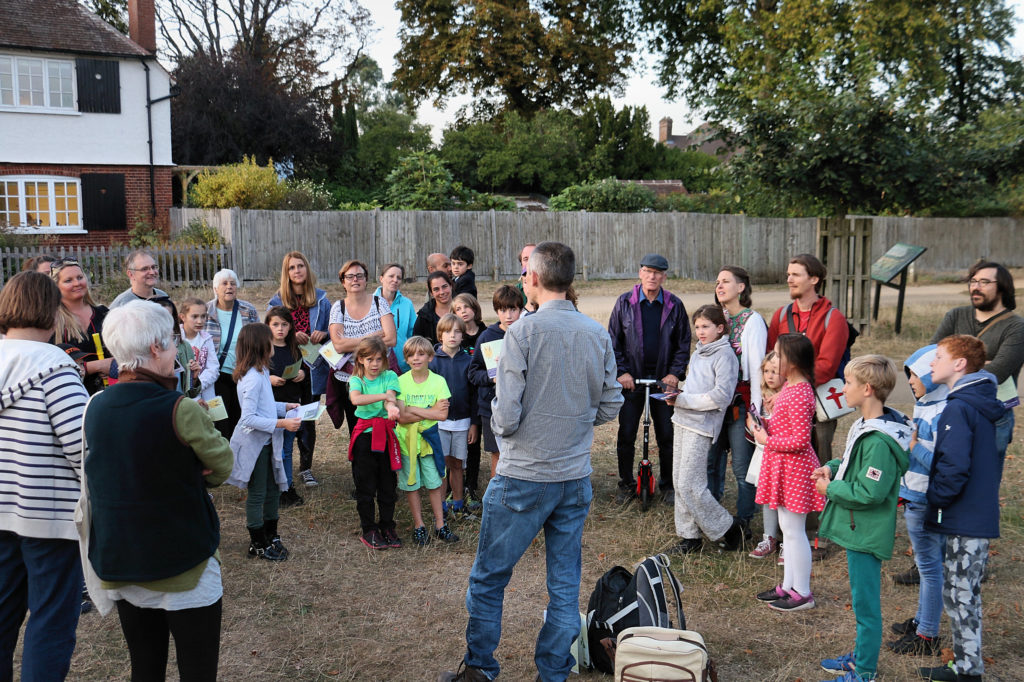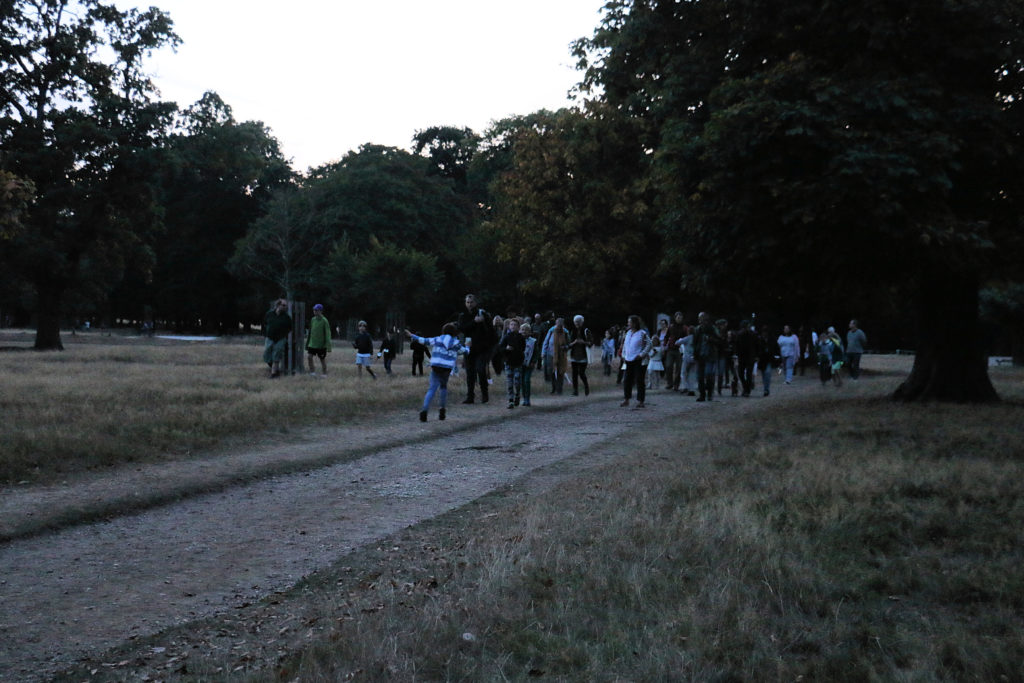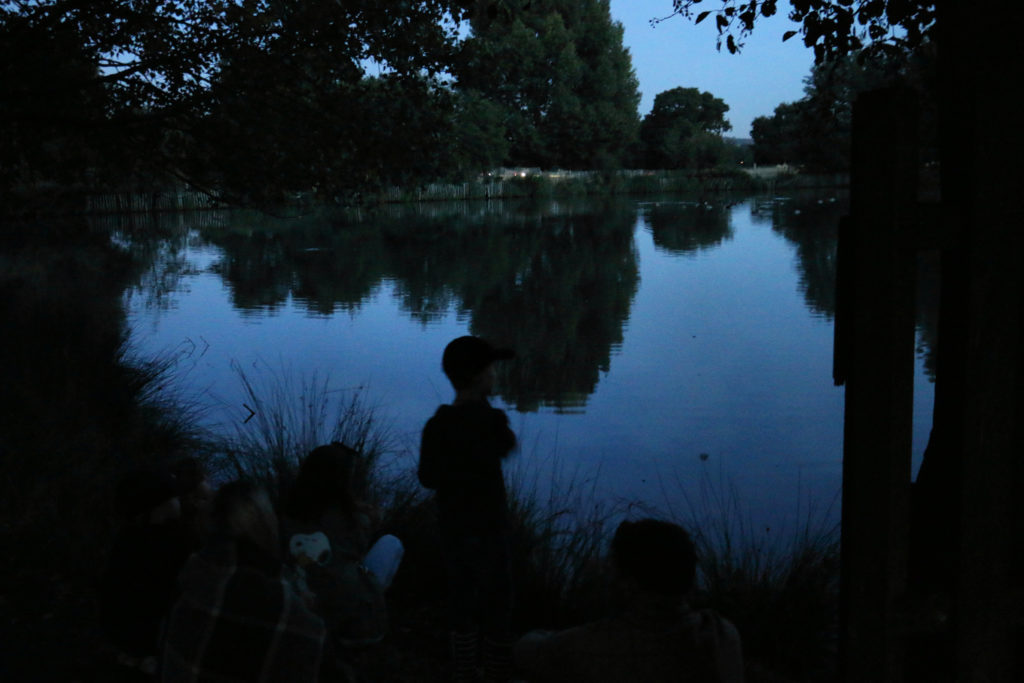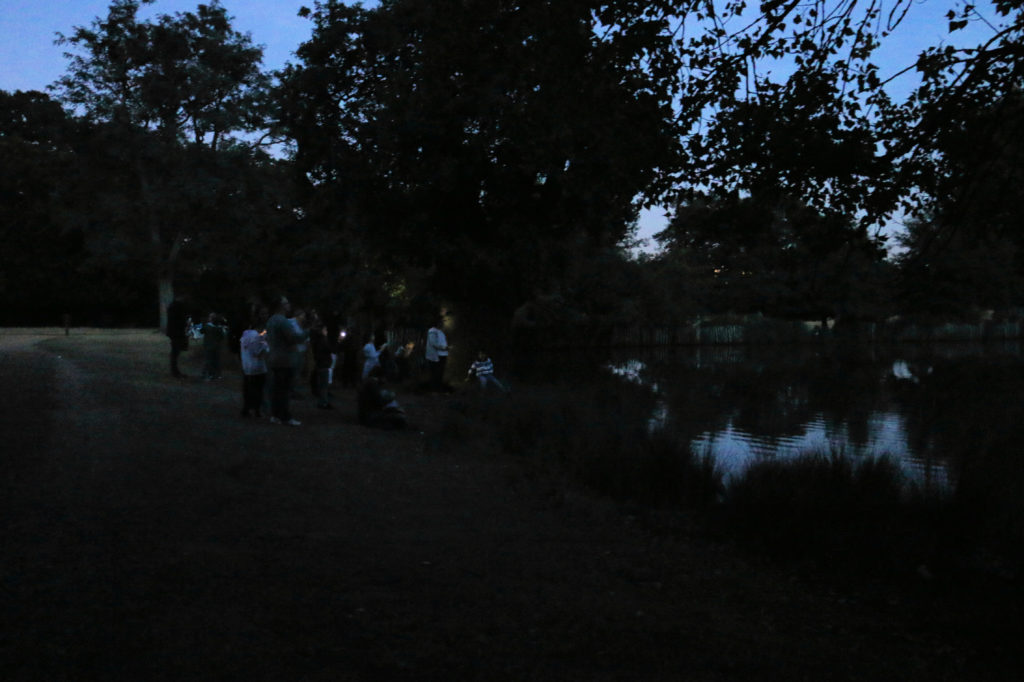Our Autumn Bat Watch took place on Saturday 21st October 2019

Families watching bats at Adam’s Pond
This regular event was as popular as ever this year with eleven families gathering at Sheen Gate on a wonderfully warm Autumn evening.
Philip Briggs of the London Bat Group, briefed us as we waited for the Sun to set. This included demonstrating the use of electronic detectors so that our human ears could pick up the high frequency sounds made by bats as they navigate their surroundings in search for insects.
As twilight deepened, we walked to Adam’s Pond, the first bats of the evening swooping overhead, right on cue! Very soon it was too dark to see them, and the air was full of clicking, chattering detectors picking up two or three species of Pipistrelle and Daubenton’s Bats hunting over the water. A very good evening for bats and their fans alike!
Here are some pictures taken at this year’s event.
- Briefing
- First Bat Spotted!
- Watching and waiting
- Watching and waiting
Here are some facts about bats
- Bats are very small. The tiny pipistrelle weighs in at about 4g (try weighing something like blueberries on your kitchen scales to get an idea of what this means) The largest species of bat found in the UK, the noctule, can range from 18-40 gm
- Bats are the only flying mammals. This means they are warm-blooded and suckle their young and usually have one baby a year
- In summer female bats gather together to rear their young in maternity roosts, often in the roof cavities of modern houses
- In towns and cities, bats roost in trees, buildings, and under bridges. They frequently return to the same sites every year
- Bats can live for up to 20 years
- Bats fly and feed in the dark navigating by echolocation. They emit very high-pitched squeaks which bounce off objects around them
- Bats eat insects mainly caught on the wing. A single common pipistrelle can eat up to 3000 insects in one night!
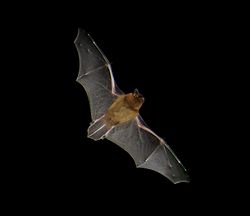
Pipistrelle In Flight
For more information about bats go to
The London Bat Group https://www.londonbats.org.uk/.
The Bat Conservation Trust https://www.bats.org.uk
National Bat Monitoring Programme https://www.bats.org.uk/pages/nbmp.html
WHICH BATS MIGHT YOU SEE IN THE PARK?
Nine species are known to occur in the Park. The ones we usually see are soprano pipistrelle, common pipistrelle and Daubenton’s bat.
Pipistrelles
The UK’s smallest bat with a wingspan 19-25 cm. These are bats you are most likely to see in built-up areas, emerging from roosts soon after dusk. There are a number of species – e.g. common, Soprano and Nathusias’ pipistrelle.
Daubenton’s Bat
A medium-sized bat with a wing span of 24-27cm. It is sometimes called the water bat because it swoops in low foraging flights over ponds, lakes, rivers and canals. It mainly roosts in trees.
Sometimes you can see the noctule (the UK’s largest bat with a 32-40cm wingspan). They feed in open areas near lakes and rivers. Noctules are thought to be in decline, though they are still widespread in Greater London. Other species found in the Park are Leisler’s bat, Brown long-eared bat and Natterer’s bat. Another – the Serotine- is a rare visitor.
HOW DO WE DETECT AND IDENTIFY BATS IN THE DARK?
The best way is to use a bat detector. Bats emit high frequency calls normally beyond the range of human hearing to build up a sound picture of their surroundings as they hunt insects. A bat detector makes these echo location calls audible to humans, and different bat species make different calls which helps identify them. You will learn how to use a bat detector on the Bat Watch!
For more information contact discoverers@frp.org.uk



